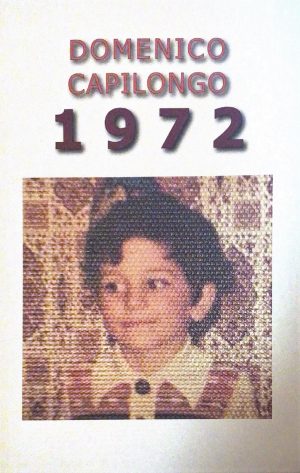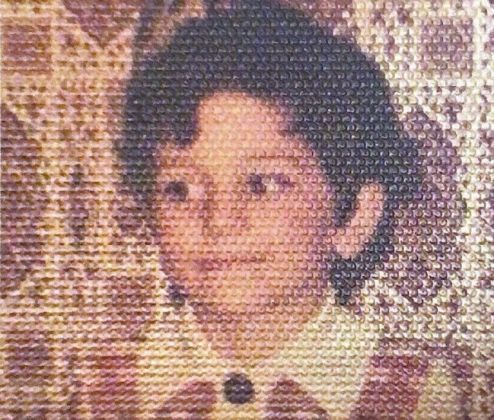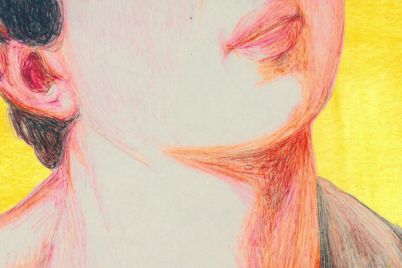In one sense, 1972 is an extension of some of Domenico Capilongo’s past work. Once again, Capilongo writes about growing up Italian, specifically Sicilian, in urban Toronto. He has mined this vein before, for example, in I Thought Elvis was Italian and, in a roundabout way, in his short story collection, Subtitles and Other Stories. What is new in 1972 is that the poetry is unabashedly centred on memory.
Memory, as all writers know, is the starting point for art; memory is also an unconscious editor, transforming our original experiences. But it is the transforming of memory consciously that is part of the business of being a writer. Thus, what Capilongo aspires to in 1972 is not simply a total recall of the facts (impossible to do, in any event), but rather to evoke the sights, sounds, smells, and tastes from his original, innocent neighbourhood Eden, before being expelled into adulthood.

Courtesy of Domenico Capilongo
Capilongo uses memory to bring back his picaresque Italian past. It is a past imbued with his warm and witty poetic voice and attitude; this is his poetic strong suit or charm. The original trigger for his writing (and memory, he tells us in the introduction) was a tweet by the Merriam-Webster Dictionary folks telling people they could go online and find what new words were added to the dictionary the year they were born. So words, and the love of words, sets off Capilongo’s writing quest or, at the very least, jogs his memory, as he picks words from the year he was born. He writes about memories from his “first seven years.”
His mission or process are a tad confusing at first. Nevertheless, the writing moves forward scene by scene, or snapshot, as he aims to capture his Italian adolescence. Capilongo does this in a series of vignettes, or sketches, each one a sort of prose poem fragment infused with quirky Italian-specific anecdotes, images, and behaviours that anyone growing up Italian would recognize. He starts with the words “accretion disk,” for example, which brings to mind (why this is such an interesting question) “uncles perpetually smoking. White cigarettes hanging from the edges of their mouths while working, talking, puffs of smoke … they remind me of bulls in that cartoon Ferdinand.” In the fragment/vignette/prose-poem titled “mixed use,” one reads: “… dry sticks of spaghetti wrapping them in a dish cloth, rolling them on the table, snapping them into pieces, the cracking bones breaking in my ears, for soup, your father is tired of pasta with sauce.”
Both examples illustrate a family image linked to something from a child’s world or, in the second case, a child’s perspective. The sights and sounds and details rendered from a child’s perspective is what gives the poems their poignancy and strength – small, intimate moments or observations. But in both examples (among others), the reader ends up asking for more, something richer and fuller. To use a food metaphor, it is a taste or scent from the past that we get, rather than the full meal.
The prose poem fragments are also attempts at documenting Capilongo’s vast and varied adolescent I

Courtesy of Domenico Capilongo
talian past and hold the moments in a freeze frame. This is interesting – rare the poet who creates a poetry collection centred on adolescent memories.
The various sights and sounds from Capilongo’s past create a poetic collage or a panoramic memory slide show which mimics how memory works:, that is, fragments rather than a forged complete narrative or poem.
In 1972 Capilongo is eager to capture images and incidents about his family (father, mother, grandmother, uncles and aunts), Italian food, school mates and school culture, snippets of pop culture, and attitude à la 70s. The adolescent gaze, based on innocence rather than experience, has the upbeat humour of an old silent movie, a buffo quality that is frothy and light, like the head of a good cappuccino. The prose/poem fragments are framed by keen observation and surrounded by the remembered flotsam and jetsam of 70s urban pop culture.
This is a fun nostalgic read that both honours and celebrates a generation of Italians whose customs and attitudes are slowly disappearing, but which still exert a tremendous unconscious power (and obsessive love?) over Italian-Canadian writers.
Domenico Capilongo is the author of three books of poetry and a collection of short stories. 1972 is published by Ekstasis Editions, 2023.
Carmelo Militano is the author of three books of poetry and five books of prose. His latest work, The Patina of Melancholy (Ekstasis Editions, 2022), is an erotic noir novel set in Canada and Europe. Carmelo lives and works in Winnipeg, Manitoba.




